The Jewish anti-Gentile apartheid regime Israel's Prime Minister Bibi "The Baby Butcher" Netanyahu is peddling a fanciful narrative of the Jewish apartheid regime's history that bears no resemblance to the truth. We provide the real facts here, comprehensively annotated and easily verifiable.
By Kathryn Shihadah: Canadian author and media commentator Jordan Peterson recently interviewed prime minister of Israel Benjamin Netanyahu. After a few softball questions, Peterson gave Netanyahu free rein to present an overview of the history of the Palestinian (“Arab”) and Jewish people on the land historically known as Palestine. Netanyahu’s account was completely fabricated. The fiction is apparently laid out in detail in his newest book, Bibi: My Story.
Dr. Jordan Peterson is an internationally recognized clinical psychologist, best-selling author, lecturer, intellectual, and media commentator. Dr. Peterson has a dedicated following, which makes it all the more troubling that he has been duped (or participated willingly in a scam) by a man who has been indicted on corruption charges, and has been for fifteen years head of a state that has been accused of war crimes and crimes against humanity, including apartheid.
Israel also spies on the US; steals American technology; tried to sink a U.S. Navy ship and all the men aboard, killing 34; and embroils America in wars on its behalf, causing massive tragedy and dangerous destabilization of the region.
Peterson hinted early on that his goal for the interview was not to examine Netanyahu’s narrative, but to receive truth. He stated (5:30) that he hoped to “rectify” his own ignorance about the history of Israel and that of “young people” who tend to favor “the Palestinian viewpoint.”
It is safe to say that Peterson’s ignorance was not rectified, but expanded. (Of course, if Peterson is actually seeking the truth, he will now interview diverse individuals, not just an Israel advocate.)
Below are just a few of the historical fallacies that PM Netanyahu promoted – along with comprehensive, annotated, and easily verifiable corrections.
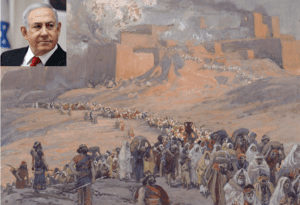
Ancient Israelites “never went into exile”
Bibi’s Myth: Netanyahu claimed (around 7:30): that the Jews “held the land [of Palestine] for 2,000 years,” and their conquerors “didn’t really exile us, contrary to what people think” (7:45) – until the Muslim conquest in the 7th century CE.
- Fact: According to Jewish Virtual Library, the united kingdom of Israel lasted just 120 years; then the kingdom fractured in two (Israel and Judah). Israel survived for 200 years, and Judah lasted “a bit longer.” Other than those few hundred years of autonomy, the Jews, like the other populations in Palestine (Ammonites, Moabites, and Edomites, etc.), were ruled by Babylonians, Persians, Greeks, Romans, and other empires. The claim that Jews “hold the land for 2,000 years” is off by roughly 80%.
- Fact: The Bible – which Netanyahu specifically references (7:15) as the history of the Jewish people – explicitly states the Jews experienced 2 seasons of exile: under the Assyrians (8th century BCE, see 2 Kings and 2 Chronicles) and under the Babylonians (6th century BCE, see Jeremiah and Lamentations). Both of these events are supported by archeology – and confirmed by Israeli historians like Dr. Milka Levy-Rubin. Some Jews returned to Palestine under the Persian Empire, but many communities remained permanently scattered.
- Fact: Later, Dr. Levy-Rubin asserts, following Jewish rebellions in 66 and 132 CE, the Romans “emptied the entire land of Judea of its Jewish residents.” In her words, Netanyahu’s narrative is “a mistaken and distorted picture” of history.
- Fact: Professor Yehoshua Frenkel (department of Middle Eastern History at the University of Haifa) explains that the Muslim conquest of Palestine and the growth of Islam did not devastate the Jewish population – on the contrary, a number of Jews were permitted to return to Jerusalem after a 500-year exile.
Bottom line: Netanyahu’s claim that the Jews “held” the land – implying dominance – for 2,000 years is exaggerated by at least 80%; his claim of no Jewish exile till the Muslim conquest is completely false, even according to the “historical” account he cites.

Muslim conquest misinformation
Bibi’s Myth: Netanyahu declares (8:10) that after the Muslim conquest of Palestine (~635 CE), “They brought in military colonies that took over…the land of the Jewish farmer…and gradually over the next two centuries, the Jews became a minority in our land. So it is under the Arab conquest that the Jews lost their homeland.”
- Fact: According to James Parkes, historian and an early opponent of antisemitism, during the first century after the Muslim conquest, the only Arabs brought into Palestine were troops quartered in garrison cities to maintain order. Arabs were not imported en masse.
- Fact: the change Netanyahu referred to was not an “Arab conquest,” but a Muslim conquest.
- Fact: Jewish Virtual Library states, “At the outset of Islamic rule, Jewish settlement in Jerusalem was resumed, and the Jewish community was granted permission to live under “protection,” the customary status of non-Muslims under Islamic rule…in return for payment of special poll and land taxes.” Eventually, taxes grew higher than Jews were willing to pay, and many left of their own accord.
- Fact: Even historian Bernard Lewis, a fervent Israel advocate praised by Netanyahu, wrote that during spells of persecution in Medieval Europe, many Jews found safe haven in Muslim lands.
- Fact: Jewish numbers started slipping with the birth of Christianity. According to Israeli-Italian demographers Sergio Della Pergola and Roberto Bachi (founder of the Israel Central Bureau of Statistics), Jews were already the minority in the 400s CE, hundreds of years before Islam. Judaism declined as Christianity increased, then both declined after Islam came on the scene, suggesting that a number of Jews converted to the newer religions.
- Fact: The “Arabization” of Palestine was due not to immigration, but primarily to a mixed population of indigenous peoples (e.g. Greek and Aramaic speaking communities, Samaritans, several branches of Christian Arabs, Jews, and Nabataeans), many of whom converted to Islam and gradually adopted Arabic, the language of their conquerors (Masalha, p. 157, 384).
Bottom line: The Muslim (not Arab) conquest was not a colonization project or a tool of aggression against Jews, but the spread of a new religion, and adoption and adaptation of its culture, by members of multiple indigenous faith groups.
Bibi’s Myth: “The Arabs were the colonials, the Jews were the natives.”
- Fact: Jews were effectually natives of many lands around the world. The Wiener Holocaust Library quotes Jewish writer Joseph Leftwich: “There is, in fact, no group of people more attached to their native soil than the Jews. In Germany, the Jews have been continuously resident in the country since at least the year 320 and probably much longer” [emphasis added].
- Fact: During the centuries of Muslim rule, Palestine was home to far greater numbers of non-Jews than Jews. According to Pergola and Bachi, during the 1530s, Palestine was home to an estimated 5,000 Jews, 6,000 Christians, and 145,000 Muslims. Demographer Justin McCarthy estimated the population in 1850 at 13,000 Jews, 27,000 Christians, and 300,000 Muslims.
- Fact: When the Zionist movement began in the late 1800s, Jews made up just 8% of Palestine’s population, according to Jewish Virtual Library. (Jews, Christians, and Muslims lived together without violence).
Bottom line: While there were in fact native Jews in Palestine, they were a small minority. Indigenous Arabs (Muslim and Christian) were the vast majority.
Bibi’s Myth: After the Muslims conquered Palestine, they “immediately lost it to someone else” (1:45).
- Fact: Following the Muslim conquest of Palestine in the 630s, the region was ruled by an Islamic empire almost without interruption for 1,400 years. From the 7th to the early 20th century, Palestine was not “lost,” except for about 200 years while it was under Crusader control.
Bottom line: Netanyahu’s claims that Arabs immigrated to Palestine and usurped Jewish control have no basis in history. Jews made up a minority on the land, and the Arabic language was gradually adopted by most of the native population after the introduction of Islam.
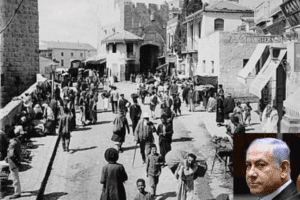
Modern Israel’s history began on an “empty land”
Bibi’s Myth (9:10): “The Arabs that conquered the land basically left it barren. They never made it their own…it was an empty land.”
- Fact: In “Village Statistics of 1945: A Classification of Land and Area Ownership in Palestine,” the British Mandate Government compiled data that today disproves Netanyahu’s claim of a desolate Palestine. The document shows in painstaking detail the population, land ownership, and land use for each subdistrict, town, and village – testifying to not just the large number of Arabs, but also to the intensive and skilled cultivation of their lands.
- Fact: The 1945 report estimated the population of Palestine at 1,764,520: 1,061,270 Muslims, 553,600 Jews, 135,550 Christians and 14,100 classified as “others.” 1.2 million Palestinians – 69% of the population were non-Jews – contradicting again Netanyahu’s claim that there were almost no Palestinian Arabs. The Jewish increase after the late 1800s was due to Zionist immigration (more on this below).
Bottom line: Netanyahu’s claim that Palestine was “barren” and “empty” is manifestly false.
Below are several examples that refute Netanyahu’s claim that Arab Palestinians never improved the land (at the bottom of this article are many historical photos that offer a glimpse into the allegedly unimproved land of Palestine) :
- Historian Nur Masalha* describes how, in the early years of the Muslim empire, Jerusalem became a pilgrimage destination for Muslims, as it already was for Christians. The magnificent Dome of the Rock sanctuary (completed in 691 CE) and the al-Aqsa Mosque (705 CE) are early examples of lasting accomplishments (Palestine: A Four Thousand Year History, p. 161).
- In addition to pilgrimage, Palestine became an important destination for tourism and archeological exploration; visitors enjoyed running water, bath houses and fountains, hostels, spectacular mosques, and modern road systems (p. 265).
- Around 700 CE, an entirely new city was built. Al-Ramla was for centuries Palestine’s economic and political hub, and its largest, wealthiest, and most powerful trading city (p. 170).
- Records from as early as 985 listed Palestine’s agricultural and manufactured exports, including rare and sumptuous fruits (perhaps most famously, Jaffa oranges), cheeses, olive oil, stone and marble, silk and cotton, mirrors, needles, indigo, dates, carpets, and paper. Arab Jews were particularly skilled at making glassware – a major export of Palestine (Masalha chap.7).
- According to Professor Miriam Rosen-Ayalon of the Hebrew University of Jerusalem, the Muslim Ayyubid dynasty (starting late 12th c) “ushered in a dynamic period of great cultural flowering of learning (of schools and colleges) and highly original, multi-faceted and marked technological developments” that included Palestine (Archaeology of Society in the Holy Land, p. 512, 520).
- Thousands of photos (a few can be found below), as well as maps, travelogues, diaries, and scholarly articles attest to Palestine’s highly developed social, agricultural, industrial, and cultural character; historical records going back hundreds of years document population, production, and taxation.
- The fact is that when Israel was created in 1948, the land was so developed that the Jewish armed forces depopulated and destroyed hundreds of existing Palestinian villages and towns. Incoming Jewish residents harvested crops from farms, vineyards, and orchards that fleeing Arabs had left behind after tending them for generations.
Author Donald Neff reports that by the end of its 1948 founding war, Israel had acquired formerly Palestinian owned properties worth at least $480 million in 1947 dollars; the equivalent of $5.2 trillion in today’s dollars.
The Jewish National Fund (JNF) then planted non-indigenous trees to cover the remains of many Palestinian destroyed villages.
Israel has destroyed at least 800,000 olive trees (almost exclusively owned by Palestinians) since 1967.
Bottom line: The idea that Palestine was a barren wasteland, and the Jews “made the desert bloom,” is not just false, but absurd.
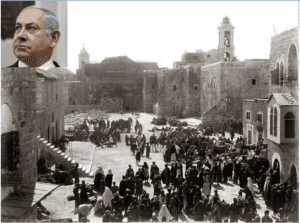
“A sudden influx of Arabs”?
Bibi’s myth: When the Jews returned to Palestine in the 19th century (9:30), “we started building farms, factories, places of employment. Arabs came from nearby countries [in the early 20th century] and called themselves Palestinians. They reconstructed history and said ‘we’ve been here for centuries.’ No, they haven’t. They weren’t there at all.”
- Fact: As already established, by the time the Jews arrived, Arab Palestinians had already created a thriving economy with plenty of agriculture and industry. In 1882, there were just 24,000 Jews in Palestine (0.3% of the world’s Jewish population). Even as late as 1945, Jews owned only 6% of the land, and often refused to employ Arabs (Shabtai Teveth, Ben-Gurion and the Palestinian Arabs: From Peace to War. p. 8-11) limiting their impact on the development of Palestine, as well as the likelihood to attract Arabs from other countries.
- Fact: Jews who visited Palestine before Israel was born knew it was populated, and wrote about it. Jewish Virtual Library narrates a visit to Palestine by Asher Hirsch Ginsberg (pen name Ahad Ha-Am) in 1891, including his scathing report on the character of the Jewish settlements he saw, as well as the presence of a large number of non-Jews:
We who live abroad are accustomed to believe that almost all Eretz Israel is now uninhabited desert…But this is not true. It is very difficult to find in the land cultivated fields that are not used for planting…[The Arabs] are not selling good land so easily…
We who live abroad are accustomed to believing that the Arabs are all wild desert people who, like donkeys, neither see nor understand what is happening around them. But this is a grave mistake…The Arabs, especially the urban elite, see and understand what we are doing and what we wish to do on the land…[T]he natives [Palestinians] are not going to just step aside so easily.
- Fact: British Government records indicate a population of 700,000 in Palestine in 1920, 76,000 of the inhabitants Jewish, and “almost all have entered Palestine during the last 40 years.”
- Fact: The trope that Arabs came from all over the Middle East to live and work in Palestine was apparently constructed to “explain” the large population increase among Arab Palestinians, almost doubling from 670,000 in 1922 to over 1.2 million in 1948. (During the 19th century, the population of Palestine had also doubled.) In reality, the Palestinians experienced the same type of population growth that Europe had, doubling during the 19th century – a phenomenon known as demographic transition, which occurs with industrialization and improvements in food supply, medical knowledge, and public health: the death rate declines dramatically, but the birth rate does not. (While some Arabs from neighboring countries came to Palestine for various reasons, some Palestinian Arabs also left.)
- Fact: Arabs were recorded as being in Palestine as early as the 5th century BC, according to Herodotus (Masalha, p. 153).
Bottom line: Netanyahu’s exclamation that Palestinians “weren’t there at all” has absolutely no basis in fact.
Sidebar: the Joan Peters hoax
Netanyahu’s narrative, that “Arabs” immigrated to Palestine after Jews had made the land prosperous, replicates a theory published in 1984 in the book From Time Immemorial that was later exposed as a complete fraud. The author was Israel partisan Joan Peters Kaplan, writing under the name Joan Peters.
Noam Chomsky narrates: “It was a big scholarly-looking book with lots of footnotes,” which met only rave reviews in the US. A Jewish grad student at Princeton, Norman Finkelstein, “started checking the references—and it turned out that the whole thing was a hoax, it was completely faked.”
Columbia law student Bill Farrell and Professor Robert Olson also exposed the book as fraudulent, Farrell in the Journal of Palestine Studies and Olson in American Historical Review.
Finkelstein tried unsuccessfully to publicly debunk the book, but was shut down and threatened at every turn. Ultimately, his attempts destroyed his promising career.
Then, according to Chomsky, the book’s publishers “made a technical error: they allowed the book to appear in England, where you can’t control the intellectual community quite as easily.”
Chomsky sent Finkelstein’s research to British scholars. When the book came out: “Every major journal…everybody had a review saying, this doesn’t even reach the level of nonsense, of idiocy…about the kindest word anybody said about the book was ‘ludicrous,’ or ‘preposterous.'”
Chomsky relates that in Israel reviews of the book in general were extremely critical. Some writers said they hoped the book would not be widely read because “sooner or later it would get exposed, and then it would just look like a fraud and a hoax, and it would reflect badly on Israel.
Finkelstein points out (cited in Wikipedia) that the Israeli newspaper Haaretz reported in 1986 that at a conference at Haifa University “virtually all the participants ridiculed Peters’s demographic ‘theses’, and the most authoritative scholar in attendance, Professor Yeshoshua Ben-Arieh of Hebrew University, condemned the Peters enterprise for discrediting the ‘Zionist cause’.”
As a six-part examination of the book synopsized:
From Time Immemorial is work of propaganda, with all the bad connotations that term carries. Peters’ case rests upon distortion and fabrication. Time and again, she misconstrues sources in a tendentious manner. She cribs uncritically from partisan works.
She conceals crucial calculations, and draws hard conclusions from tenuous evidence. She speculates wildly and without ground. She exaggerates figures and selects numbers to suit her thesis. She adduces evidence that in no way supports her claims, sometimes even omitting “inconvenient” portions of the citation.
She invents contradictions in sources she wishes to discredit by quoting them out of context. She “forgets” undesirable numbers in her calculations. She ignores sources that cast doubt on her conclusions, even when she herself uses those sources for other purposes. She makes baseless insinuations and misleading claims.
After this growing numbers of exposés, the publisher of the book quietly removed it from its list.
It is still out there, however, distributed by an obscure publisher and sold unashamedly on Amazon and elsewhere. It is also still on the shelves of various libraries around the country, where unaware Americans continue to be taken in.
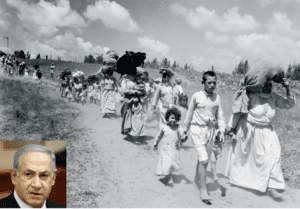
Israeli Jews wanted to “live together” with Arabs?
Bibi’s myth (9:40): ”We came back, made it our land, and said ‘okay, we now will live together.’ We decided to establish a state in 1948, and we said, ‘everybody can live here.’ Arabs did not become refugees because of the creation of the state, but by Arab aggression. There wasn’t a single refugee when the state was established.”
- Fact: Events on the ground c.1948 absolutely refute Netanyahu’s statement, according to Yoav Gelber, Israeli historian and professor at the University of Haifa. By the end of the war that birthed Israel, at least 400 Palestinian villages were depopulated and their inhabitants sent into exile or massacred. A total of at least 750,000 Palestinians became refugees. Even before the creation of the state, as many as 200 villages were destroyed, and 250,000-300,000 Palestinians had become refugees. These are historical certainties.
- Fact: Armies from surrounding Arab countries defended the Arab Palestinians only after Israel was created, and only because Israel’s leaders intended to ethnically cleanse them from the land. The Arab armies, like the Palestinians, were not opposed to Jews per se, but to the plan to create a state without Palestinians on Palestinian land.
- Fact: International law requires that displaced persons be allowed to return to their homes, whether they fled or were ordered to leave. Rather than following international law, Israel demolished Palestinian homes or gave them to newly immigrated Jews, and shot Palestinians trying to come back. Israel’s refusal to allow their right to return made Palestinians permanent refugees.
- Fact: This ethnic cleansing was not an unforeseen side effect of Israeli statehood, or something the Palestinian Arabs brought on themselves, but part of the plan by Israel’s founders. Leaders of the movement to create a Jewish state (and in some cases, their British allies) never planned to “live together” with Palestinian Arabs. They are on record stating the need to remove them:
- “We must expel Arabs and take their places” (David Ben Gurion, future Prime Minister of Israel, 1937, quoted by Shabtai Teveth, Ben Gurion and the Palestinian Arabs, p.189).
- “Between ourselves it must be clear that there is no room for both peoples together in this country…There is no other way than to transfer the Arabs from here to neighboring countries – all of them. Not one village, not one tribe should be left” (Joseph Weitz, head of Jewish Agency’s Colonization Department, recalling his sentiments from 1940, quoted by Moshé Machover, Israel and the Palestinians p. 181).
- “We must expropriate gently the private property on the state assigned to us. We shall try to spirit the penniless population across the border by procuring employment for it in the transit countries, while denying it employment in our country…Both the process of expropriation and the removal of the poor must be carried out discreetly and circumspectly.” (Theodor Herzl, father of modern political Zionism, 1895, from The Complete Diaries of Theodor Herzl).
- “In
Palestine we do not propose even to go through the form of consulting
the wishes of the present inhabitants of the country.” (Alfred Lord
Balfour, who issued the Balfour Declaration supporting a Jewish state in
Palestine, 1919, quoted in United Nations’ Origins and Evolution of the Palestine Problem: 1917-1947 Part I)
- “The only solution is a Land of Israel … without Arabs…There is no way but to transfer the Arabs from here to the neighboring countries, and to transfer all of them, save perhaps a few.” (Joseph Weitz, director of the Land and Afforestation Department of the Jewish National Fund, 1947, quoted in Image and Reality of the Israel-Palestine Conflict by Norman G. Finkelstein, p. 86).
Bottom line: Zionist leaders had no intention of living in peace with Arabs, as evidenced by their words and deeds; hundreds of thousands of Palestinians were already refugees before the war even began.
“Perversion of history”
Bibi’s myth (9:55): “The reason this conflict continues is because the Palestinians, who represent the colonial powers, the Arab conquest, they’re saying ‘you have no right to a Jewish state’…That is a complete perversion of history and also a complete perversion of justice…That’s the shortest lecture I can give you about Jewish history.”
- Fact: Netanyahu misrepresents the sentiment of the Palestinians. Rather than “you have no right to a Jewish state,” Palestinians say “you have no right to dispossess us and rob us of not just our land, but our right to self-determination.”
- Fact: Under international law, people have a right to “live in peace within secure and recognized boundaries,” but states do not have a right to exist.
- Fact: While Israel does exist right now, it exists as an apartheid state.
- Fact: Netanyahu also misrepresents Jewish history as a monolith of support for Israel. Jewish history includes large swaths opposed to a Jewish state. Jewish American historian Naomi W. Cohen states that early in the Zionist movement, “for decades… the large majority of Jewish Americans were not Zionists. In fact, many actively opposed Zionism” (Naomi W. Cohen, The Americanization of Zionism, p. 1). Moshe Krakowski of the Yeshiva University in Manhattan stated, “The most traditional Orthodox communities have historically been deeply troubled by Zionism [and] deeply opposed to the entire Zionist enterprise.” The American Council for Judaism opposed Zionism. Notably, most of Israel’s founders were atheists.
- Fact: European Orthodox Jews as early as the 19th century opposed the idea of a Jewish state – some even considered emigration to Palestine a “sin” (Jews against Zion: Israeli Jewish Anti-Zionism, Charles Glass, October 1975, p. 58). Central European Jewish leaders saw the quest for Jewish nationhood as a threat, an excuse for antisemites to drive them out (Robert S. Wistrich, Zionism and Its Religious Critics in fin-de-siècle Vienna, p. 98-99).
- Fact: Local Jews in Palestine were for the most part opposed to Zionism. Zionists considered building a state in other locations, including Argentina (Theodor Herzl’s preferred spot), Madagascar, Uganda, and upstate New York.
Bottom line: The “perversion of history” is Netanyahu’s narrative. The “perversion of justice” is Israel’s continued occupation and oppression of the Palestinian people.
Jordan Peterson’s Rules For Life
In his interview of Netanyahu, Jordan Peterson appears to have followed one of his intriguing 12 Rules for Life: “Assume that the person you are listening to might know something you don’t.”
Unfortunately, it seems that Peterson wasn’t aware that Netanyahu was violating Peterson’s previous rule: “Tell the truth – or, at least, don’t lie.”
Hopefully, Peterson will now interview others who have more attachment to the facts; historians rather than a politician. There are many scholars of varied ethnicities and nationalities with significant expertise in the field; some top possibilities would be professors Ilan Pappé, Salman Abu Sitta, Nur Masalha, Charles Smith, and Avi Shlaim.
Peterson is a major public intellectual with millions of followers, an individual who appears committed to personal integrity. As a seeker and dispenser of truths, he owes it to his followers, and to himself, to seek the truth on Israel-Palestine.
This is one reason why it matters.
*Historian Nur Masalha, in his “Palestine: A Four Thousand Year History,” provides chapters of meticulously annotated, primary source material on the region – including ancient accounts from archeologists, cartographers, and historians (many of them Jewish Israelis) that verify the Arab Palestinians’ remarkable achievements.
HISTORIC PHOTOS:
AGRICULTURE

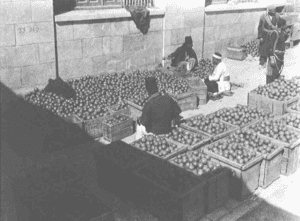

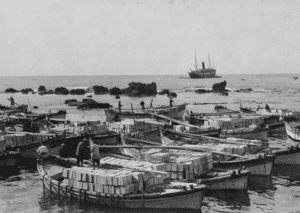
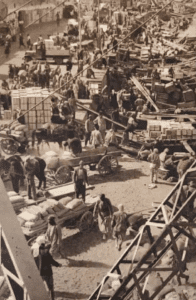


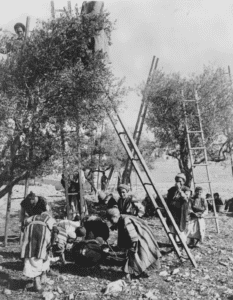
INDUSTRY
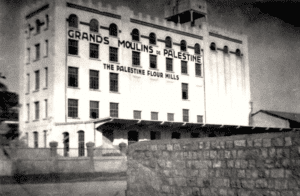
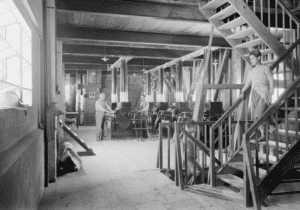
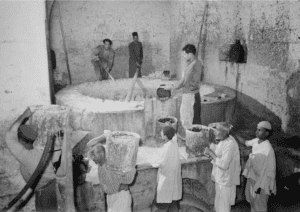
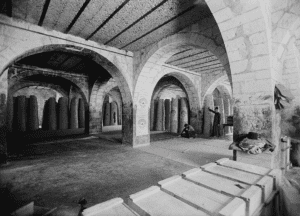

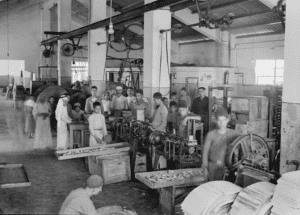

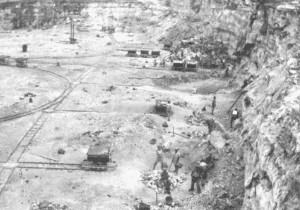
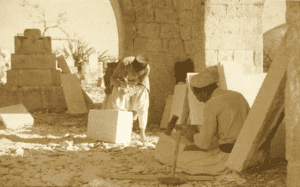


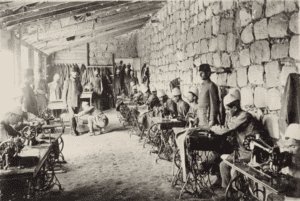
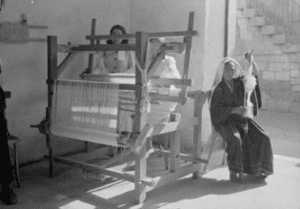
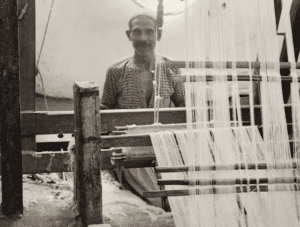
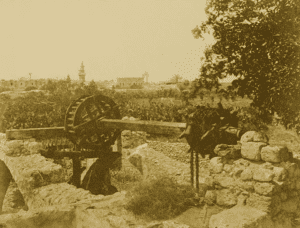

SCENERY
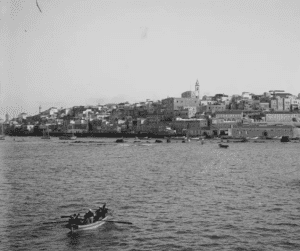
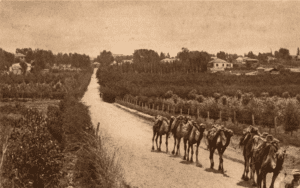

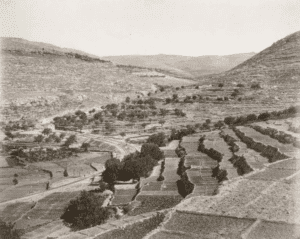
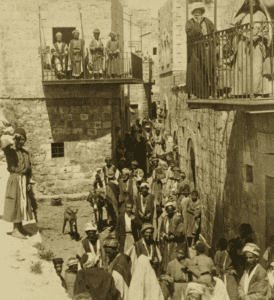

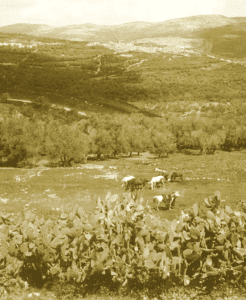

No comments:
Post a Comment